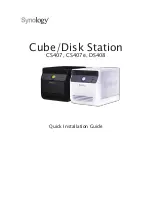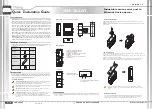
This method has the following benefits:
• It is useful when usable capacity, write performance, and data protection are equally important.
• It has the highest usable capacity of any fault-tolerant configuration.
• Data is not lost if one physical drive fails.
RAID 6
RAID 6 protects data using double parity. With RAID 6, two different sets of parity data are used (denoted
by Px,y and Qx,y in the figure), allowing data to still be preserved if two drives fail. Each set of parity data
uses a capacity equivalent to that of one of the constituent drives. The usable capacity is C x (n - 2)
where C is the drive capacity with n drives in the array. A minimum of 4 drives is required.
This method is most useful when data loss is unacceptable but cost is also an important factor. The
probability that data loss will occur when an array is configured with RAID 6 (ADG) is less than it would be
if it were configured with RAID 5.
This method has the following benefits:
90
Hardware issues
















































